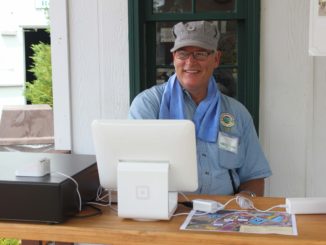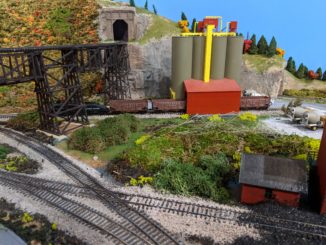
by Steve Storey
Librarian, Southeastern Railway Museum
Strong progress was made in the library this year, both in processing new donations and in organizing previously uncategorized materials, some of which had been piled in storage boxes for years. Productivity was especially pronounced during the summer as two college students, both history majors, worked long hours in the library, filing documents, organizing periodicals, digitizing fragile paper materials, and entering data into our new library catalog, which we hope to someday make available online.
Much effort has been made in better protecting fragile documents by putting them in archival sleeves and storing them in a climate-controlled environment, specifically the library car that has an HVAC system. We have also added file cabinets and shelves in the climate-controlled car so that more documents can be protected there.
One of our frustrations has been having thousands of blueprints folded and stored in cardboard boxes because we do not have enough flat file drawers in the library to accommodate them. A solution is on the way, however, as we will have space in the new education building for six 10-drawer flat file units that were donated to us by an architectural firm. These will allow us to unfold the blueprints and store them flat, reducing damage from unfolding and refolding. We will also have space to set up sorting tables and a wide-format scanner for digitization of the blueprints, making them more accessible.
Although the library is not open to the public due to its location, we are able to use its resources to answer research questions. So that we can do the research quickly and efficiently, much of our work has been geared towards moving new and old donations from storage boxes to well-organized shelves, file cabinets, and computer files. Because the library has tens of thousands of books, magazines, journals, newsletters, registers, pamphlets, timetables, photographs, videotapes, DVDs, maps, blueprints, and other items, this has been a time-consuming process, but fortunately most of that work is now behind us and we now better know what we have and where it is.






Be the first to comment